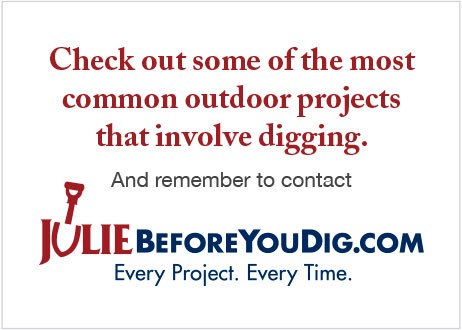Three Tips When Planning Spring Projects For Home Improvement
What outdoor home improvement projects are on your to-do list this spring? Installing a fence? Planting a tree? Refreshing your landscaping? Adding a pool? Look ahead and begin planning spring projects early so when the weather breaks, you’ll be ready.

First, Establish A Game Plan. 
When planning spring projects that are visual like landscaping, put together a mood board with elements you like so you can envision how they complement each other—or find out if they don’t. Pinterest offers a wealth of ideas for everything from flower gardens to backyard entertainment spaces. Doing it yourself? Don’t wait until the morning you want to get outside and get started to figure out what supplies you need. Create a list ahead of time to speed up your shopping trip. And visit the home improvement store early in the season to ensure what you need is in stock. If you know you’ll need to hire a professional, ask friends or family for recommendations and do your research before you finalize your plans. A good contactor can offer insight and creative ideas you might not have thought of.
Second, Determine Your Timeline.
Some outdoor projects like replacing a mailbox or planting a shrub take a day or a weekend. Others, like building a deck last much longer. If you’re tackling a project on your own, give yourself ample time to complete it without feeling rushed. Depending on your DIY skill level, maybe add a few extra hours to the job in case something doesn’t go exactly according to plan. If you’re hiring a professional, call early to book an appointment for a timeframe that works for you. Many landscapers and contractors get inundated with requests once the weather warms up, which puts you at the mercy of their schedule. Setting a date and knowing when to expect crews makes planning spring projects easier on you.
Third, Know What’s Below.
For any outdoor project that requires excavation…no matter how small or how large…you’re required to contact JULIE before you dig. If you don’t, you won’t know where underground utility lines are buried and you’ll risk hitting one. This could result in an interruption to critical services like gas, electric, water, communications, and more. Striking a buried utility line can also cause serious harm to you, your family, your property, and your neighbors. It’s easy to contact JULIE and the service is FREE. You can submit an E-Request or call 24/7/365. State law mandates the person digging contact JULIE at least two—but not more than 14—business days before putting a shovel into the ground. That means you must contact JULIE if you’re a DIYer, or make sure your contractor does.
Taking these three simple steps when planning spring projects can make your next home improvement job run much more smoothly…and safely.

Safe Digging Tip: Always contact JULIE before you dig to have utility lines on your property located for free by our members. Valuable utility lines may be buried just beneath the surface and hitting one could disrupt critical services, cause serious harm to you or your family, or even result in costly repairs and fines.





 CONTACT US
CONTACT US